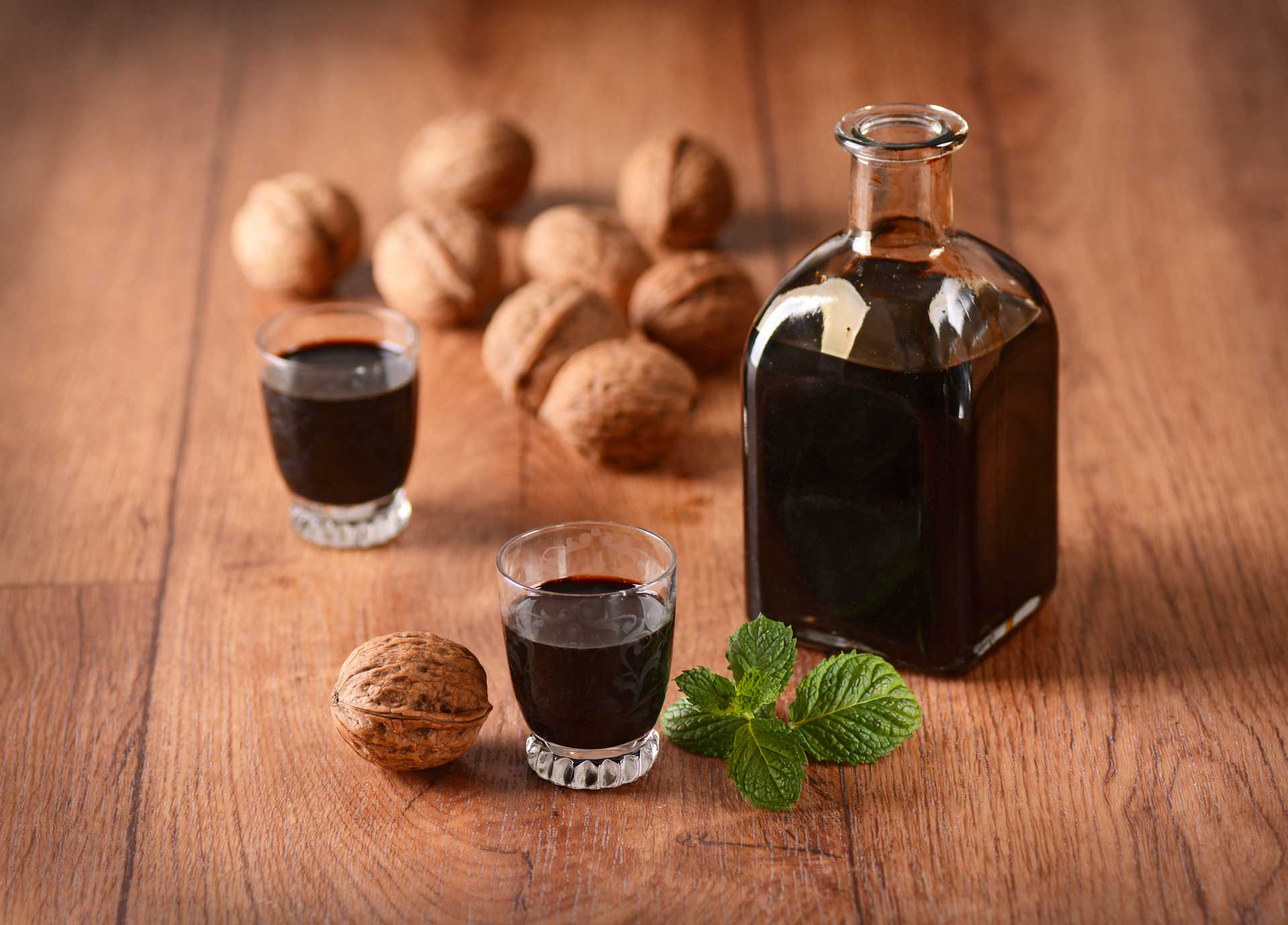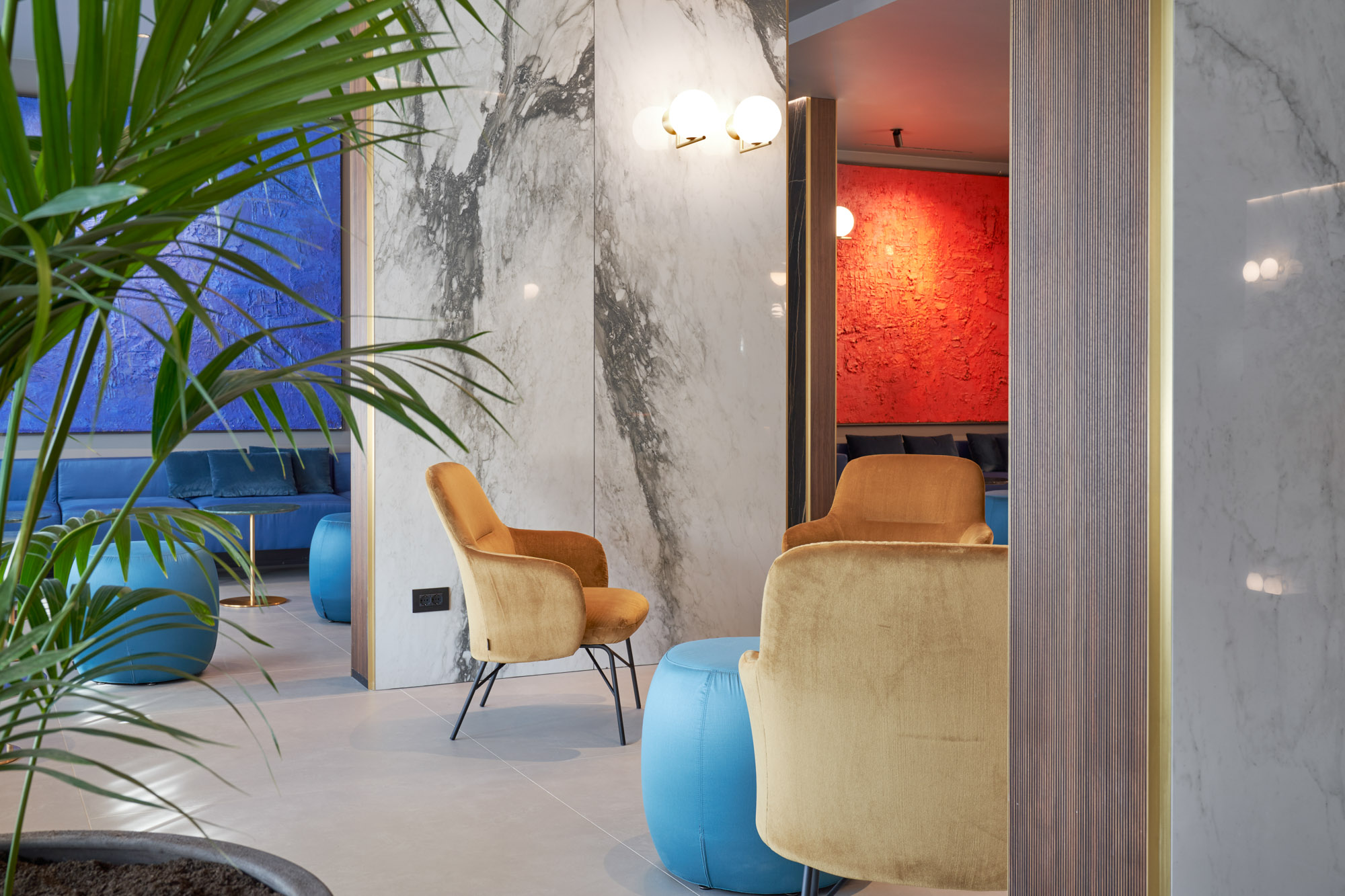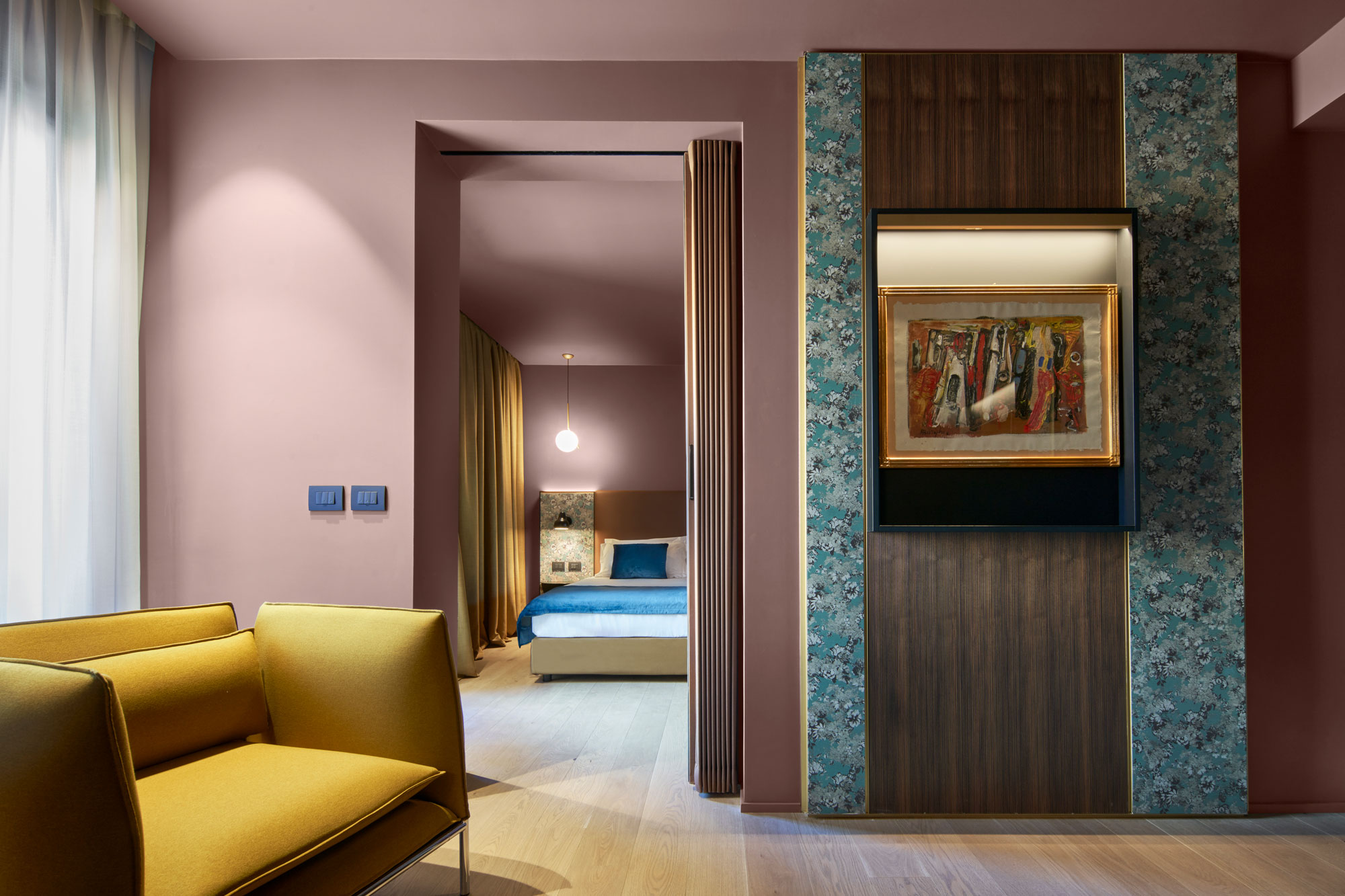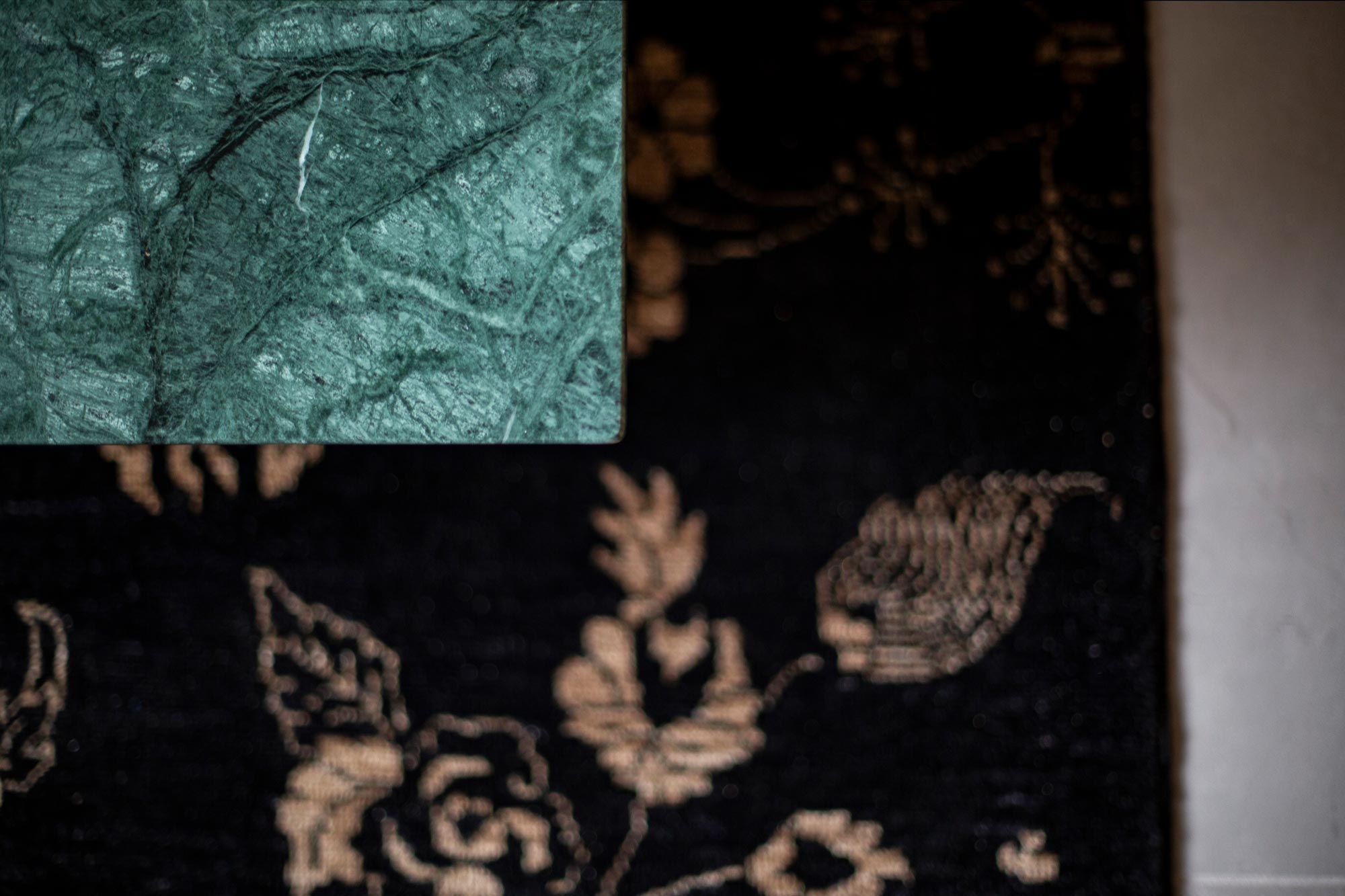Flavours and liqueurs of Emilia: nocino, bargnolino and other local treasures
In Emilia, the production of artisan liqueurs has its roots in rural tradition. Until a few decades ago, every family had its own secret recipe for distilling liqueurs made from wild fruits, aromatic herbs and spices, harvested in the fields or grown in the garden. These elixirs were not only drinks to be enjoyed after a meal, but also natural remedies handed down over time, often associated with ritual or religious moments, such as the harvesting of walnuts on the night of St. John.

Nocino: the liqueur that symbolises Emilia
Nocino is undoubtedly Emilia’s most iconic liqueur. Made from green walnuts harvested at the end of June, macerated in alcohol with sugar, cinnamon, cloves and lemon zest, nocino has an intense, aromatic and slightly bitter taste. Traditionally produced at home, it is now also made by small artisan producers and farms that preserve its authenticity. It is a perfect digestif, but also lends itself as an ingredient in desserts or paired with ice cream.
Bargnolino: the wild liqueur of the Apennines
Less well known but much loved locally, Bargnolino is a liqueur made from wild blackthorn berries (known as ‘bargnôl’ in dialect), which are typical of hilly and mountainous areas. The berries are left to macerate in alcohol with sugar and spices, and after a few months, a ruby-coloured liqueur with a fruity, sometimes tannic flavour is obtained. Bargnolino is a classic after-dinner drink, served cold in the summer months or at room temperature in winter.
Other traditional Emilian liqueurs to discover
In addition to nocino and bargnolino, Emilia offers a rich variety of local liqueurs, often linked to micro-territories:
Laurel liqueur: homemade with an intense aroma and digestive properties.
• Lemon verbena liqueur: fresh and fragrant, it is often served cold.
• Appennine herbal liqueur: made from infusions of gentian, cinchona, mint and other local plants.
• Elderflower liqueur: sweet and delicate, made from black elderflower or berries.
• Plum or cherry liqueur: typical of the lower Modena and Reggio Emilia areas, made from locally sourced fruit.
Many of these products are the result of female expertise handed down through families, and today they are being rediscovered in farmers’ markets, village fairs and restaurants offering locally sourced menus.
Where to taste and purchase artisanal liqueurs from Emilia
To taste these local alcoholic treasures, you can visit farms, artisan distilleries and agritourism establishments scattered throughout the provinces of Parma, Reggio Emilia, Modena and Bologna. Some establishments also organise workshops on how to make nocino or bargnolino, offering a cultural as well as a gastronomic experience. Events such as the Festa del Nocino in Modena or the village festivals in the Apennines are ideal opportunities to discover and purchase authentic products.


